Parenterals E1_basics of sterile compounding
1/89
There's no tags or description
Looks like no tags are added yet.
Name | Mastery | Learn | Test | Matching | Spaced |
|---|
No study sessions yet.
90 Terms
90 degree
angle of an IM injections
45 degree
angle of a subcutaneous injections
35-45 degree
angle of an intravenous injection
10-15 degree
angle of an intradermal injection
5 ml
max volume of an IM injection
small volume that she did not specify
max volume of a subcutaneous injection
unlimited
max volume of an IV injection
0.02-0.5 ml
max volume of an intradermal injection
around the dura mater
where is an epidural injected
into the spine/spinal cord
where is an intrathecal injection injected
steroids
medication that is usually intra-articularly injected
intra-articular
injection into the joints
retinopathy
glaucoma
macular edema
diseases that are typically treated with intra-ocular injections
avastin
steroids
what are some meds that can be given through intra-ocular administration
intraperitoneal
injection into the peritoneal cavity
peritoneum
membrane that lines the inside of your abdomen and pelvis
dialysis
chemo
antibiotics
medication typically given through intraperitoneal administration
intravenous
most common type of parenteral administration
has 100% bioavailability
need for access
disadvantage of intravenous administration
continuous infusion
intermittent infusion
IV push or bolus
types of intravenous adminstration
a. dextrose 5% and 0.45% sodium chloride 1000 ml infusion IV at 100 ml/hr
which of the following orders is an example of a continuous infusion
a. dextrose 5% and 0.45% sodium chloride 1000 ml infusion IV at 100 ml/hr
b. ceftriaxone 2 g in dextrose 5% 50 ml IV q12 hours
c. promethazine 12.5 mg in sodium chlorid 0.9% 10 ml q6h as needed
d. lasix 40 mg IV once over 1-2 minutes
provision of drugs/nutrition in patients unable to tolerate PO
bypass GI tract=circumvents absorption
quick onset of action
localized delivery
extended duration of effect
advantages of IV administration
difficulty/impossibility of drug removal or reversal
risk of infection
risk of emboli
risk of infusion related reactions
higher cost
disadvantages of IV administration
aluminum or stainless steel
what are needles made of
length
part of needle
hub to tip
guage
size of needle
gauge
diameter of a needle lumen
as its value increase, the diameter of the needle lumen decreases
1 ml, 3 ml, 5 ml
syringe size of a 20 gauge 1 in needle
10 ml, 20 ml, 30 ml, 60 ml
syringe sizes for a 18 gauge 1 ½ in needle
double ended needles and transfer sets
filter needle and filter straws
vented needles
types of needles
needle must be at least 6 in the hood
do not block air flow
tilt needle hub towards the back of the hood
pull packaging from the hub towards you
discard the packaging into the waste container beside the work station
do no move needle outside of the hood
do not touch the hub of the needle or the needle itself
step by step how to open a needle
luer lock/slip tip
oral
prefilled
glass/plastic
types of syringes
luer lock
type of syringe that has threads to hold the needle on
slip tip
type of syringe that uses friction to hold the needle on
collar
part of a syringe
red blocked out portion
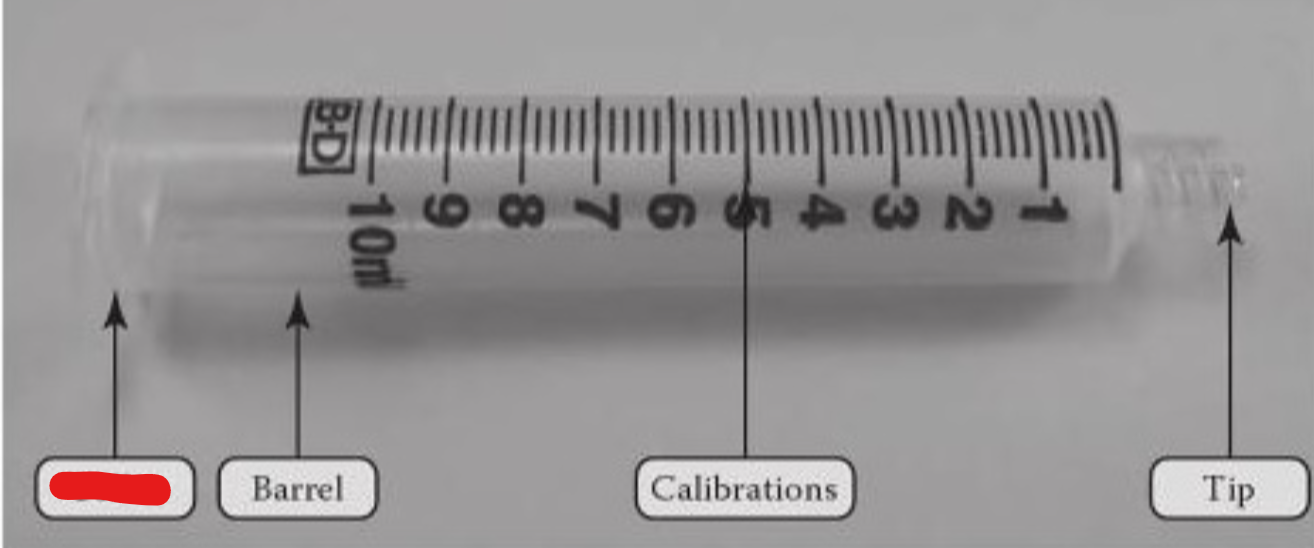
barrel
part of a syringe
red blocked out portion
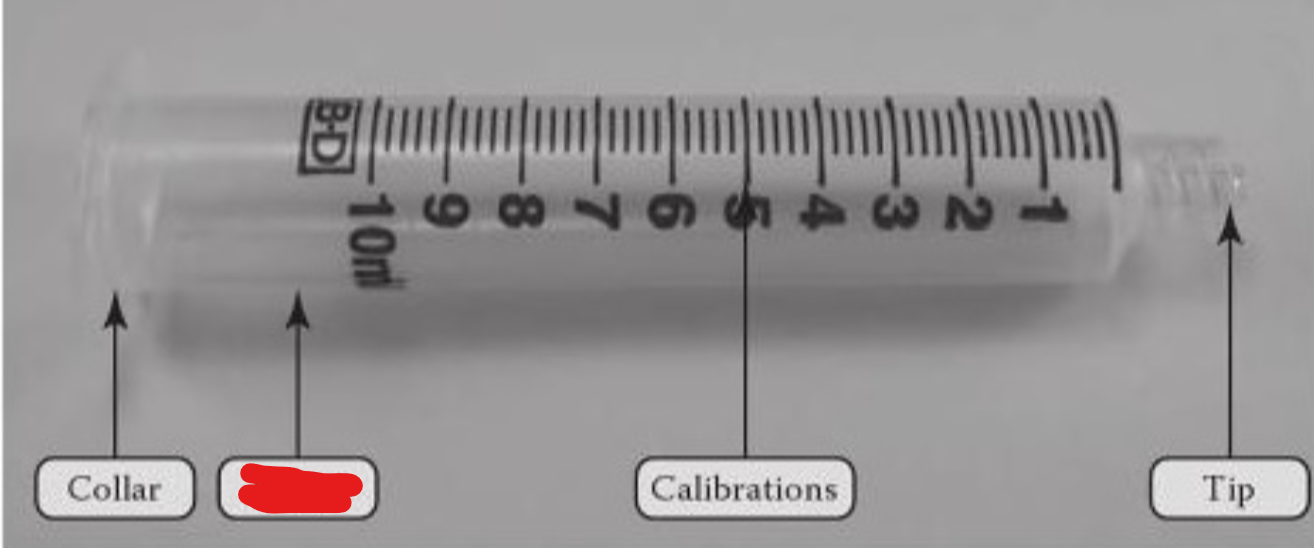
calibrations
part of a syringe
red blocked out portion
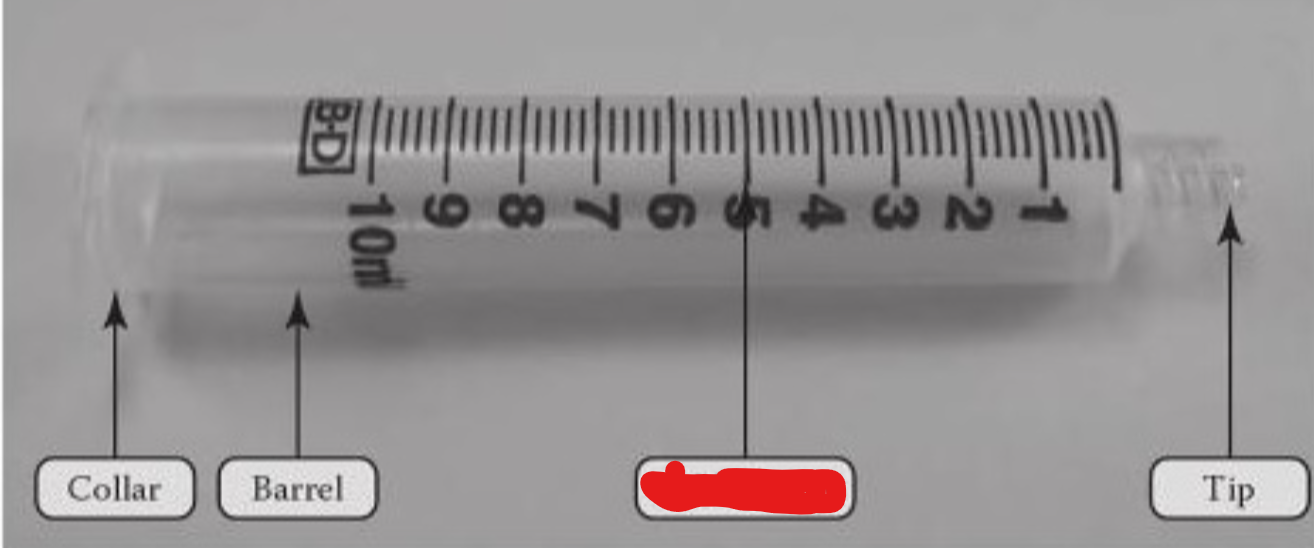
tip
part of a syringe
red blocked out portion
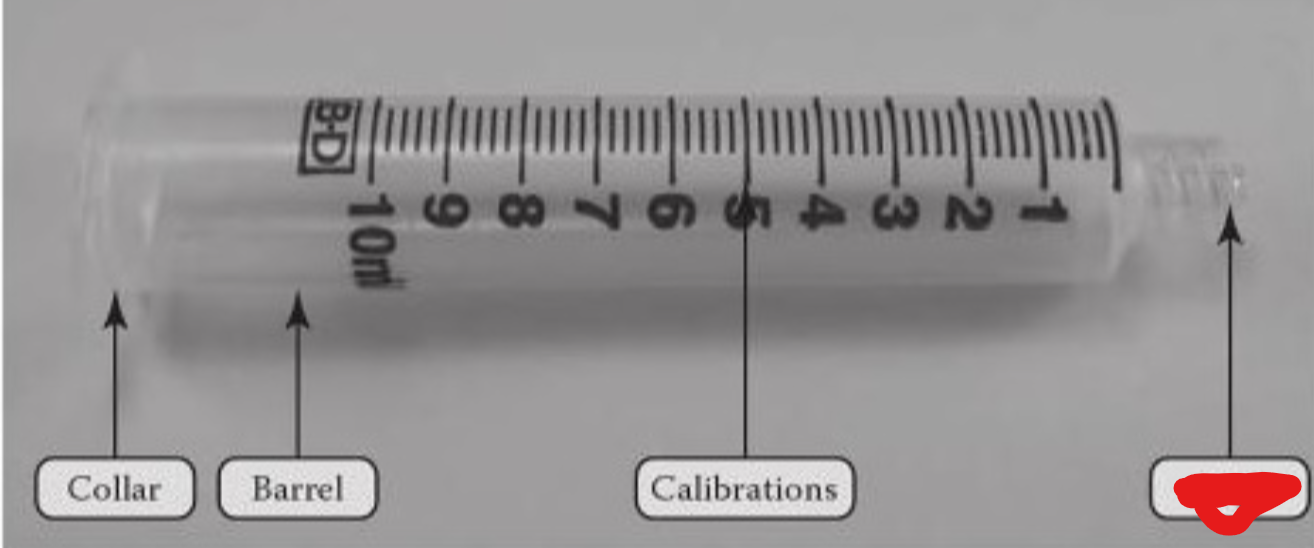
plunger
part of a syringe
red blocked out portion
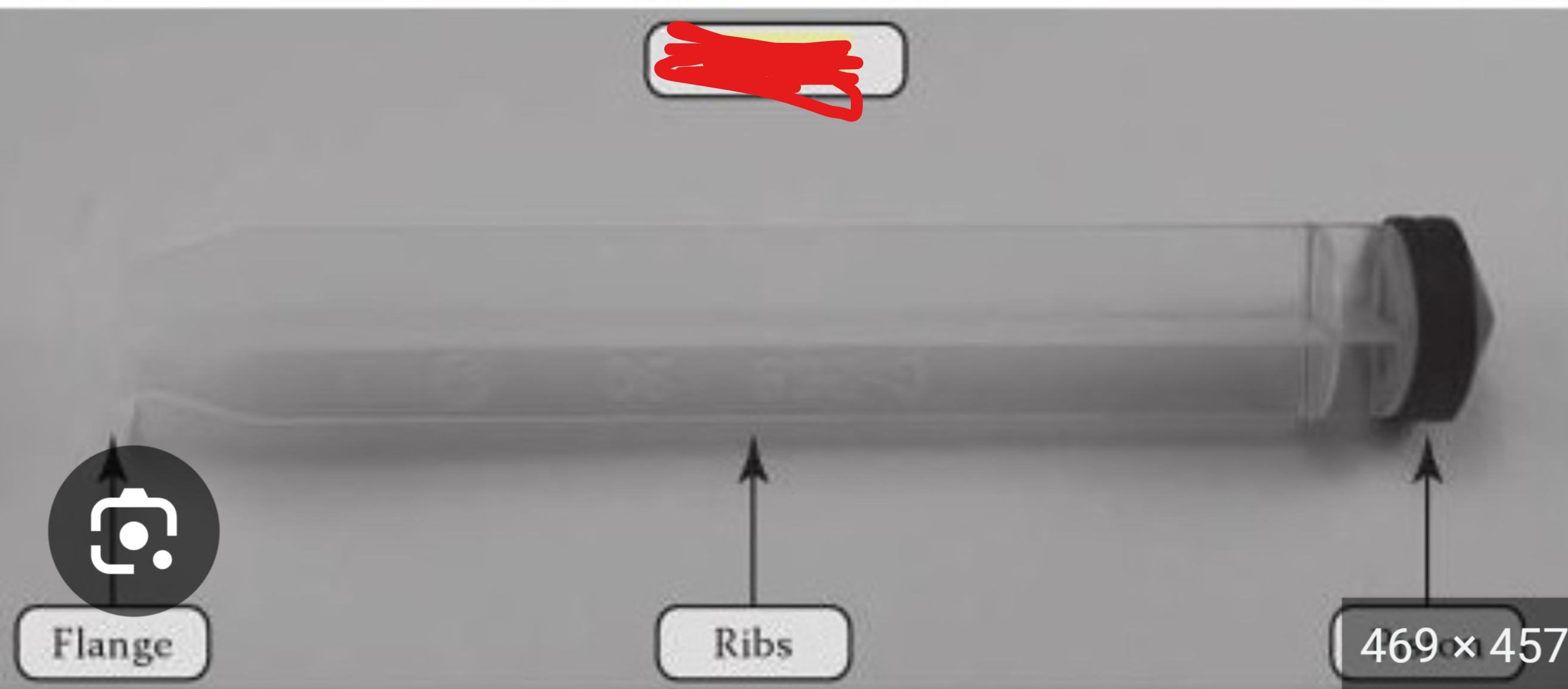
flange
part of a syringe
red blocked out portion
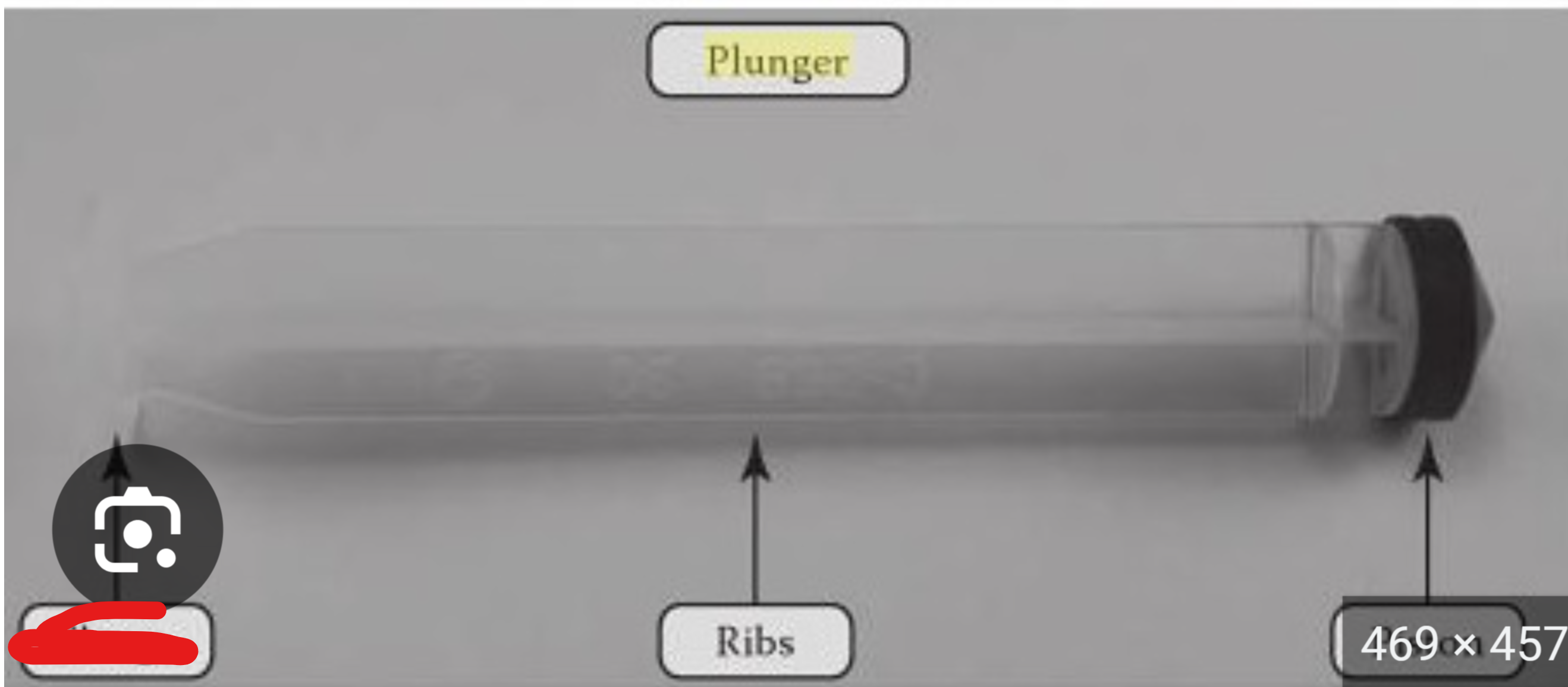
ribs
part of a syringe
red blocked out portion
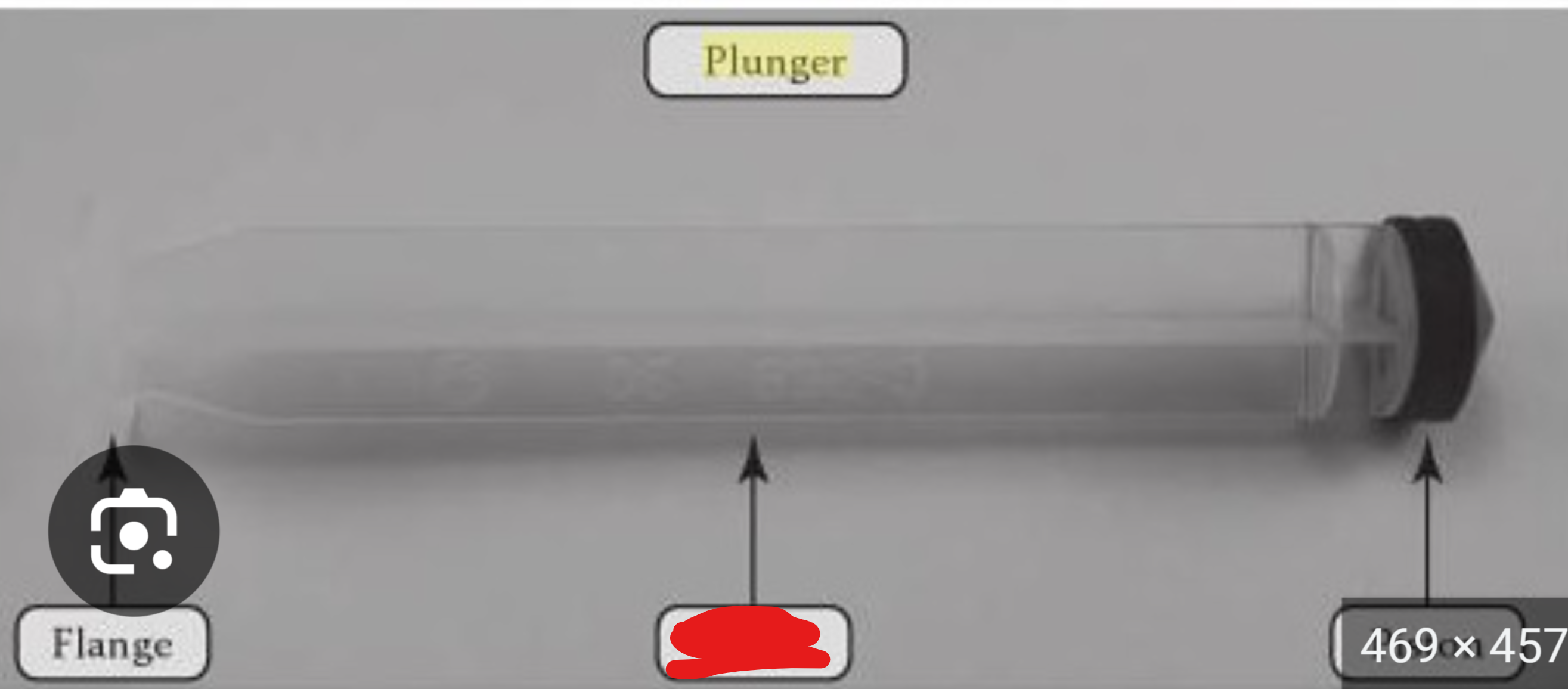
piston
part of a syringe
red blocked out portion
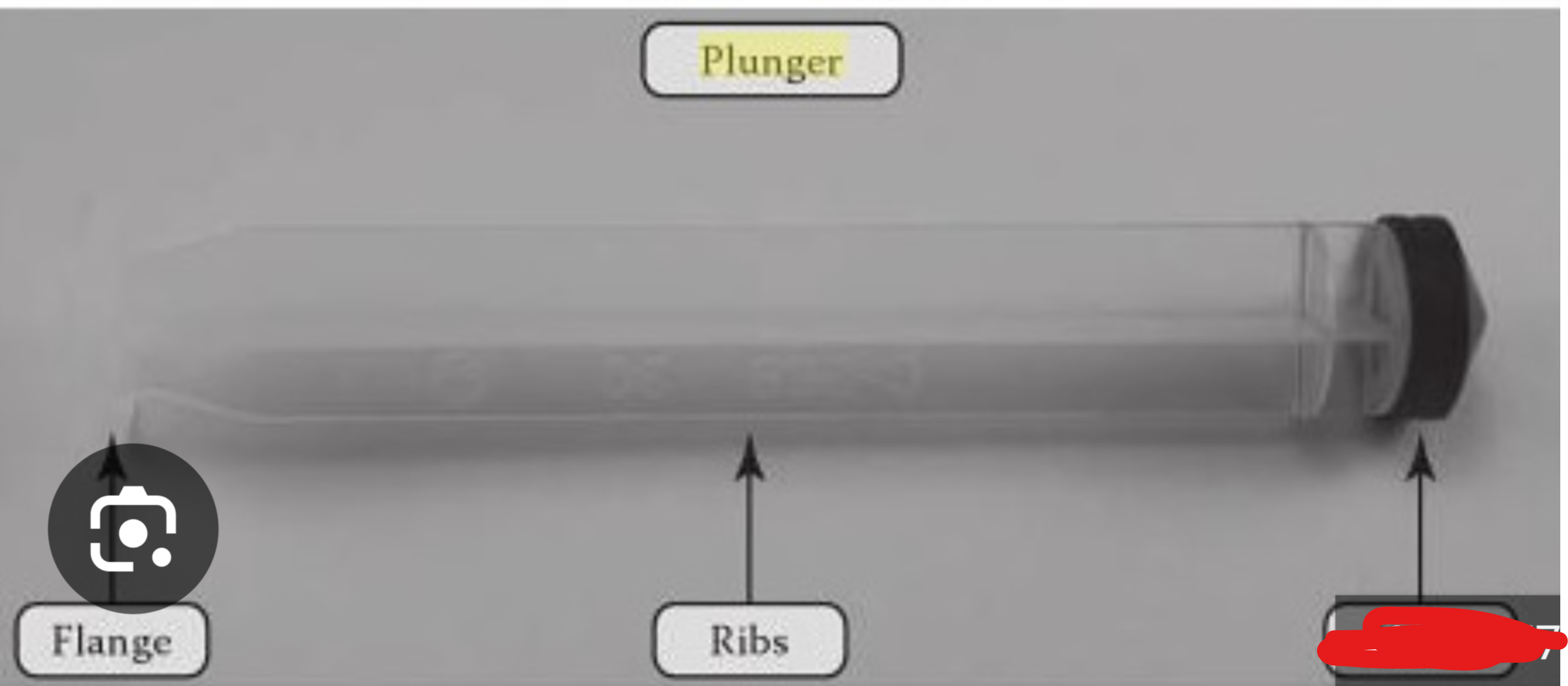
lowest amount that can be measured= calibration/2
calibration is the marks on a syringe
how to determine the accuracy/lowest amount that can be measured by a syringe
0.01 ml
calibration of a 1 ml syringe
0.1 ml
calibration of a 3 ml syringe
0.2 ml
calibration of a 5 ml syringe
0.2 ml
calibration of a 10 ml syringe
1 ml
calibration of a 20 ml syringe
1 ml
calibration of a 30 ml syringe
2 ml
calibration of a 60 ml syringe
draw no less than 20% or no more than 80% of the syringe
rule for amount of fluid pulled in a syringe
oral syringe
type of syringe
the tip will not accommodate attachment of a needle
“for oral use only”
should be marked on all oral syringes
improved accuracy of safety
added convenience
efficiency
ease of use
pros of prefilled syringes
complexity
potential for needle sticks with those that come with a needle attached
problems with malfunction
breaking or clogging of glass syringes
cons of prefilled syringes
safety syringes
type of syringe
the plunger is inactivated once the plunger is fully depressed
remove package from syringe at least 6 inches inside the hood
do not block airflow
pull packaging down from top
discard wrapper in waste container
steps of opening a syringe
ampule
glass container
broken prior to use
single use only
open system
once an ampule is broken it is considered a ___
filter needle
must be used when drawing from an ampule
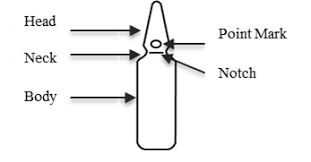
tip
neck
body
parts of an ampule
swirl contents into body of ampule
clean neck with alcohol swab
leave swab around neck when opening
hold head of ampule between thumb and index finger of one hand and body with the thumb and index finger of other; exert pressure on both thumbs, pushing outward and away from HEPA filter
steps of opening an ampule
it is an open system. do NOT inject air
important point of withdrawing from an ampule
option 1: tilt the ampule and place the bevel of the needle in the corner space near the opening. pull the syringe plunger back to withdraw the solution
option 2: keeping ampule in vertical position with opening up, place needle bevel in the corner space at the bottom of the ampule. pull plunger back to withdraw solution
option 3: turn ampule over, ending up with the opening at the bottom. pull plunger back to withdraw solution
options for withdrawing from an ampule
plastic or glass
what can vials be made of
vials
closed system containers
contain medications that contain preservatives or are prepared with bacteriostatic water for injection
must never be used for epidural or intrathecal administration
remove flip-top cap
swab vial top with alcohol swab
let alcohol dry
insert needle with bevel up into rubber closure
steps of piercing a vial
adaptable systems
systems that facilitate direct attachment of a vial to a bag of diluent
aka ready mix systems
add-vantage
vial-mate
add-ease
minibag plus
types of adaptable systems
add-vantage
what type of adaptable system is this
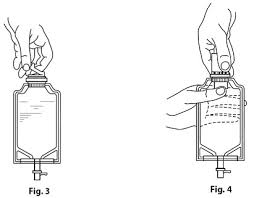
viral-mate
what type of adaptable system is this
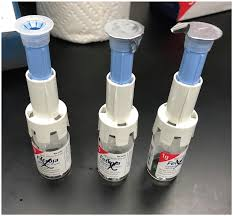
add-ease
what type of adaptable system is this
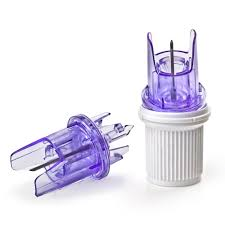
minibag plus
what type of adaptable system is this
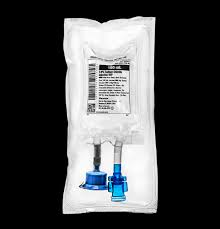
faster preparation time
accuracy
reduction in drug wastage
longer expiration dates
added convenience
improved efficiency
advantages of adaptable systems
higher costs
need to store additional inventory that are specific to the system
disadvantages of adapatable systems
decreased chemical interactions between container and contents
ability to sterilize
advantages of glass cotnainers
vacuum
breakability
max volume of 1 L
disadvantages of glass containers
easy storage, including freezing
flexibility of container
disposability
easily hung for IV administration
advantages of plastic containers
chemical incompatibilities
easily punctured
disadvantages of plastic containers
eyehole
medication port
set port
medication port/belly button
parts of a plastic bag
sterile water
dextrose
saline
lactated ringers
various electrolyte solutions
what are the types of diluents
W
SWI
SWFI
abbreviations for sterile water
D5W
D5NS
D10W
D10NS
abbreviations for dextrose
NaCL
NS
½ NS
D51/2NS
¼ NS
D10 ¼ NS
abbreviations of saline
LR
D5LR
abbreviations of lactated ringers
normosol
isolyte
plasmalyte
abbreviations/name of various electrolyte solutions
</=100 ml
what is considered a small parenteral volume
>100 ml
what is considered a large parenteral volume
aseptic technique
disinfection of critical area
PPE
label and quality inspect CSPs
responsibilities of compounding personnel
medication
dose
time
route
patient
what are the five rights